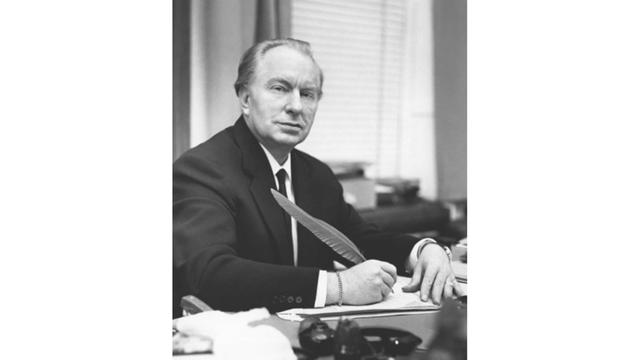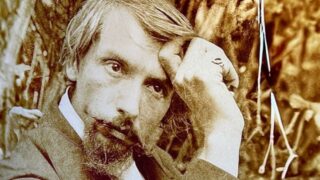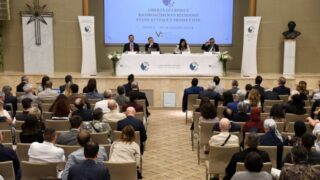The founder of Scientology believed that, if the technique endangers the transmission of the message, the artist should change the technique rather than the message.
by Massimo Introvigne
Article 3 of 8. Read article 1 and article 2.


On 30 August 1965, Hubbard issued a technical bulletin that was crucially important for his theory of art. He took again as his starting point that “art is the least codified of human endeavors and the most misunderstood.” The question about art “is one of the least answered of human questions.” He also reiterated the general principle of Dianetics according to which “that field containing the most authorities contains the least codified knowledge.” Since “art abounds with authorities,” obviously very little real knowledge exists.
Hubbard explained that it was now fifteen years that it had started considering how to “codify” the knowledge about art and discussing this theme with Donald H. Rogers, one of the members of Dianetics’ original circle, in Elizabeth, New Jersey. He announced that “this [the ‘codification’ of aesthetic theory] has now been done.”
At first, art “seemed to stand outside the field of Dianetics and Scientology.” Hubbard, however, was not persuaded by this conclusion and eventually “made a breakthrough.” He realized that art and communication are closely connected. In fact, “ART is a word which summarizes THE QUALITY OF COMMUNICATION” (capitals in the original). Scientology had already elaborated certain “laws” about communication. Now, they should be applied to the arts.
In 1965, Hubbard was ready to propose three axioms. The first was that “too much originality throws the audience into unfamiliarity and therefore disagreement.” Communication, in fact, includes “duplication.” If the audience is totally unable to replicate the experience, it would not understand nor appreciate the work of art. The second axiom taught that “TECHNIQUE should not rise above the level of workability for the purpose of communication.” The third maintained that “PERFECTION cannot be attained at the expense of communication” (capitals in the original).
Hubbard believed that his approach to aesthetics was new with respect to both classic and contemporary theories of art. The latter emphasize “originality,” to the point that audiences are often surprised but, Hubbard maintained, not persuaded. The former sought perfection through technique. But, according to Hubbard, “seeking perfection is a wrong target in art.” The right target is communication. “One should primarily seek communication with it [art] and then perfect it as far as reasonable.”
Too much perfection transports the artist into a realm inaccessible to the audience. “If perfection greater than that which can be attained for communication is sought, one will not communicate.” This does not mean that technical perfection is unimportant. The artist should seek the highest level of technical perfection compatible with effective communication. “Perfection is defined as the quality obtainable which still permits the delivery of the communication.” Often, the artist should be prepared to lower the level of perfection to allow communication to flow.


The same applies to technique. In the realm of art, communication is the first aim and a good technical rendition of the message is the second. But this second aim, Hubbard believes, is always subordinate to the first. Technique should be as perfect as possible, but never so perfect as to compromise communication. “The communication is the primary target. The technical quality of it is the secondary consideration.” If the technique endangers the transmission of the message, the artist should change the technique rather than the message.
It is, of course, also true that below a certain level of technique there is no art. But this, Hubbard insists, is precisely the difference between a professional artist and an amateur, a distinction he will return to in later years: “A professional in the arts is one who obtains communication with the art form at the minimum sacrifice of technical quality (…). No communication is no art. To not do the communication for lack of technical perfection is the primary error. It is also an error not to push up the technical aspects of the result as high as possible.”
“Art for art’s sake,” Hubbard argues, always failed because it was “attempted perfection without communicating.” We become artists when we learn how to communicate. Except in very rare cases, this does not come naturally, nor is achieved overnight. Normally, one becomes an artist gradually, reflecting on past failures to communicate. These are, in fact, engrams, and artists should be “rehabilitated” through Dianetics just as anybody else, yet considering that they have specific engrams of their own. In fact, “due to the nature of the Reactive Mind, full rehabilitation [of the artists] is achieved only through releasing and clearing.”


It is not enough to communicate to ourselves. Artists should learn how to communicate to a wider audience: “A concept of the beholder and some understanding of his or her acceptance level is necessary to the formulation of a successful art form or presentation.” To determine how this result can be achieved, Hubbard returns to the premise that communication is based on familiarity. The beholder receives and understands the message if it is not too far away from what he or she regards as familiar. “All Art depends for its success upon the former experience and associations of the beholder.”
Since beholders vary, there are no general rules. However, an artist should not easily conclude that communication fails because the audience is primitive, or its taste is not educated enough, or the message is too advanced and revolutionary. More often, the poor relationship with an audience is not caused by the audience itself, but by the artist’s own engrams, based on previous failures. These engrams should be taken care of. “Scientology then is a must for any artist if he would succeed without heartbreak.”
There are artists exhibiting “a lack of desire to communicate.” This is how, Hubbard explains, old schools or forms of art decline and disappear. Some believe that they decline because, within a school or style, the artists of a later generation simply imitate those of the former and lack their masters’ technical skills and genius. But the real problem is about communication, not “technology.” Old forms decline because they become obsessed with technique and forget that the aim of art is communication. “All old forms become beset by technical musts and must nots and so cease to communicate.”
There is also a “primary suppression,” when a work of art is physically damaged or destroyed. On the other hand, “failing continuously to permit a non- destructive communication on the grounds of its lack of art is also suppressive.” In-between these different forms of suppression, according to Hubbard, lies art. Genuine art is the capacity to create works with the best technique and the maximum degree of perfection that are possible without harming communication.









